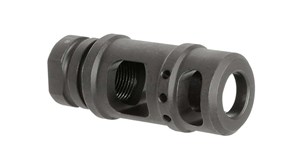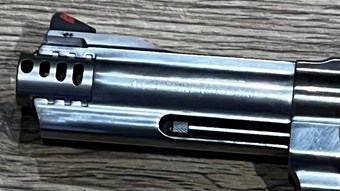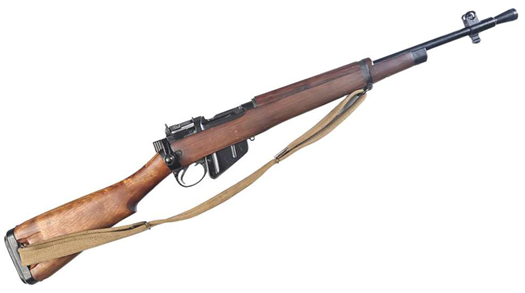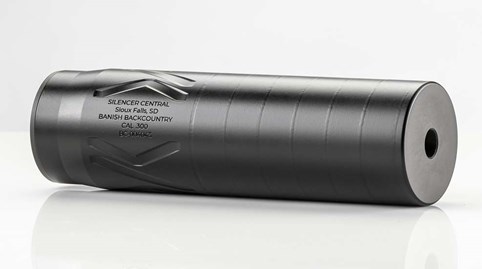
Today’s firearm enthusiasts have many options that were not available “back in the day.” Not only are there many more different calibers available to shooters, but there are also many more makes and models. Once you find the firearm that meets your needs, there are now barrel attachments available to the shooter making the firearm more pleasant.
It is important to know the pros and cons of these attachments so you can weigh the benefits of them. These attachments include muzzle brakes, barrel compensators, flash hiders and suppressors.
Muzzle Brakes
Muzzle brake attachments direct the gases through ports in the device to the right and left of the barrel. Muzzle brakes are the best and least expensive attachment for reducing felt recoil. The proper muzzle brake can reduce the felt recoil of a firearm by up to 50 percent. This makes the firearm more comfortable to shoot and, as a result, improves the shooter’s accuracy. After all, the more recoil a rifle has, the more likely the average shooter will develop a flinch when firing the gun.
Shooters who commonly use muzzle brakes on their firearms typically fall into three groups. The first group comprises smaller-framed shooters and those sensitive to recoil. Muzzle brakes allow these shooters to shoot more accurately. This applies to moderate- and larger-caliber firearms. With the increase of women and kids in the hunting arena, it is not uncommon to see muzzle brakes on calibers as small as as 6.5 Creedmoor up to 7 mm. The second group of individuals is composed of long-range shooters, who rely on the increased accuracy a muzzle brake provides at extreme distances. The third group encompasses those hunting large game animals such as on African safaris or in Alaska.
There are some cons to attaching a muzzle brake to the end of your barrel. The first is the increase in noise, which can sometimes be at deafening levels. Often a shooter must use redundant hearing protection such as foam inserts and noise-cancelling earmuffs. Muzzle brakes also throw a lot of debris back toward the shooters and those around them. This creates a sight hazard, so it is very important to wear your eye protection. Lastly, it can change the way your rifle handles, as it increases barrel length, which can make the rifle more cumbersome to swing into your shooting position.

Barrel Compensators
Barrel compensators can reduce felt recoil between 25 percent and 45 percent. Barrel compensators are similar to muzzle brakes, thus the terms are sometimes used interchangeably. However, there are some major differences between the two devices. Barrel compensators direct the gases from a spent round through the top of the device to eliminate or lessen muzzle flip, unlike muzzle brakes, which direct the gases to the sides. Compensators can be found on rifles, pistols and shotguns. This type of device is popular because it forces the gases upward, pushing the barrel down and helping to keep the gun on target. Competitive shooters and hunters that rely on quick follow-up shots rely on compensators for fast target acquisition when making multiple shots.
The cons of a barrel compensator are similar to the cons of muzzle brakes, the main one being the amount of noise they generate. Like muzzle brakes, barrel compensators can annoy other shooters at the range, as well as hunting guides. Once again, because of the noise, it is a good idea when shooting a firearm with a muzzle brake or a barrel compensator to wear redundant hearing protection such as foam inserts and noise-cancelling earmuffs.
Another downside unique to barrel compensators is that since the gases are directed upward, it can “blind” the shooter in low-light conditions. These devices can also add up to two inches to the length of your firearm, which can cause a challenge with fitting a holster, and can make it more difficult to deploy in a stressful situation.

Flash Hiders
Flash hiders are devices that are attached to the end of a barrel that reduces or hides the visible flash of a firearm. Flash hiders also eliminate light that might cause vision issues in low-light conditions. The earliest types of flash hiders were simple cones placed over the end of a barrel, such as those found on the British Lee-Enfield No. 5 Mk1 Jungle Carbine.
Another benefit of flash hiders is that they allow the shooter to increase his or her accuracy by reducing distracting muzzle flash, especially at night. Since these devices do not increase noise as much as muzzle brakes and barrel compensators, or obstruct the vision of the shooter, he or she is able to make faster follow up shots.
Flash hiders are popular for hunters who shoot in low light conditions. They are also popular in military and police actions. Flash hiders can “hide” or redirecting the muzzle flash. Some states have laws prohibiting flash hiders because of their police and military applications, so you must do your research and know the laws before you add one of these.
Suppressors 
A sound suppressor, also known as a silencer or can, is basically a muffler for your gun. This device is a cylindrical tube with several partitions or baffles inside. It works by attaching to the end of the barrel so when a round is discharged, the gases pass through the suppressor “tube” and are being slowed down by the baffles inside. This results in reducing the pressure wave before it hits the surrounding atmosphere. This causes the report or “bang” of the firearm to be muffled.
Besides reducing the report of the firearm, a suppressor reduces the felt recoil and muzzle flash. This makes for improved accuracy and a more pleasant shooting experience. Even though a suppressor does not silence the firearm completely, a good suppressor should reduce the sound to below 140 decibels.
Suppressors are legal to own in 42 states, but there are some regulatory hurdles to overcome. If you want a suppressor for your firearm, in most jurisdictions, you must fill out the required ATF paperwork, go through a background check, and pay $200 for a federal tax stamp. This $200 is on top of the cost of the device which can be pricey. However, companies like Silencer Central have developed a completely streamlined process for purchasing a suppressor, so be sure to check out their innovative and proven system here.
In addition to the expense, another downside is that a suppressor adds quite a bit of weight and length to your firearm. A center-fire firearm with a suppressor can add as much as a pound to the overall weight of your gun, and up to 12” to the overall length of your barrel. This makes the firearm difficult to shoot unsupported.
When used on semi-automatic firearms, suppressors can also lead to carbon fouling by directing pressure back into the firearm. This can lead to your firearm getting dirtier faster, which can ultimately lead to malfunctions. These problems can be rectified by changing out some components in modern sporting rifles such as using heavier bolt carriers, buffer springs, and buffer weights.
Today’s shooters have equipment available to them that can help with accuracy and their overall experience. Like any tool, there is a specific use for each one. Sometimes the best accessory is all for nothing. Just because there are new options available to the shooter does not mean you need one. If you think you would benefit from one of these devices, do your research, know the laws in your jurisdiction, and decide which one best fits your shooting purpose!














































